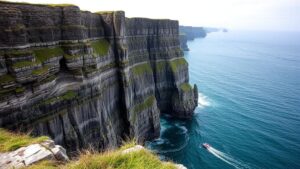Strategies for overcoming weather hazards in mountainous exploration.
Strategies for Overcoming Weather Hazards in Mountainous Exploration
Exploring mountainous terrain offers breathtaking views and a chance to connect with nature, but it also comes with significant weather challenges. From sudden storms to altitude sickness, understanding and preparing for these hazards can make or break an expedition. This article outlines effective strategies for overcoming weather-related challenges in mountainous exploration.
Understanding Mountain Weather Patterns
Mountain weather can be unpredictable due to the unique topography affecting air currents. According to a study by the National Oceanic and Atmospheric Administration (NOAA), weather in mountainous regions can change rapidly, often within hours. This makes it essential for explorers to stay informed about local conditions.
- Variability: Weather can vary dramatically only a few thousand feet apart. For example, temperatures can drop by 10-15 degrees Fahrenheit for every 1,000-foot elevation gain.
- Microclimates: Different slopes can have different weather patterns, creating zones of varying conditions even within a small area.
Preparation and Planning
Thorough preparation is the backbone of a successful mountain expedition. This involves understanding the environment, examining forecasts, and harnessing the right gear.
- Research: Use tools like Weather.com or the Mountain Weather Service to obtain accurate forecasts for your specific area.
- Gear Selection: Invest in high-quality, weather-resistant equipment such as waterproof tents, insulated sleeping bags, and moisture-wicking clothing.
For example, during the 1996 Mount Everest disaster, climbers faced unexpectedly severe weather due to a lack of timely information and poor planning. Many expeditions failed to account for changing forecasts, leading to fatalities.
Utilizing Technology for Early Warning
The advent of technology has significantly changed how explorers prepare for potential weather hazards. Utilizing tech can enhance safety on your journey.
- Mobile Weather Apps: Applications like AccuWeather or MyRadar provide real-time updates and alerts.
- GPS and Satellite Phones: Essential tools for navigation and emergency communication, these devices can inform teams about sudden weather changes.
An example of technology mitigating weather hazards is the use of NOAAs satellite systems which provide timely storm warnings for climbers, enabling them to make informed decisions about their routes and safety.
Developing a Contingency Plan
No matter how well-prepared you may be, it is crucial to have a contingency plan. This plan should include flexible routes, emergency procedures, and predetermined signals for evacuating in case of severe weather.
- Alternate Routes: Always identify and familiarize yourself with alternative paths in case your primary route becomes hazardous.
- Shelter Location: Know the locations of safe shelters or areas where your group can wait for the weather to clear.
For example, during the 2013 Colorado floods, many outdoor groups were able to avoid disaster by strictly adhering to their fallback plans, which included mapped-out evacuation routes and nearby campsites for refuge.
Building Skills and Training
Practical skills development is crucial. It empowers explorers to make informed decisions and act quickly when weather hazards arise.
- Weather Interpretation: Learn to read signs such as cloud formations which can indicate impending storms and shifts in weather.
- First Aid Training: Equip yourself and your team with first aid skills to address injuries due to weather impacts like frostbite or hypothermia.
Professional training programs, like those offered by organizations such as the National Outdoor Leadership School (NOLS), can significantly enhance your ability to handle adverse conditions effectively.
Conclusion: Take Action and Stay Safe
Exploring mountainous regions can be exhilarating, but it is fraught with potential weather hazards that require careful consideration and preparation. By leveraging technology, thorough planning, skill development, and contingency strategies, explorers can mitigate risks and enhance their overall mountain experience. Staying informed and adaptable not only increases safety but also ensures that your adventure is memorable for the right reasons.
Actionable Takeaways:
- Research the specific mountain range and its typical weather patterns before embarking.
- Equip yourself with the latest technology for weather alerts.
- Always prepare a flexible route plan, including safe shelters.
- Invest in skill training to handle emergencies effectively.


